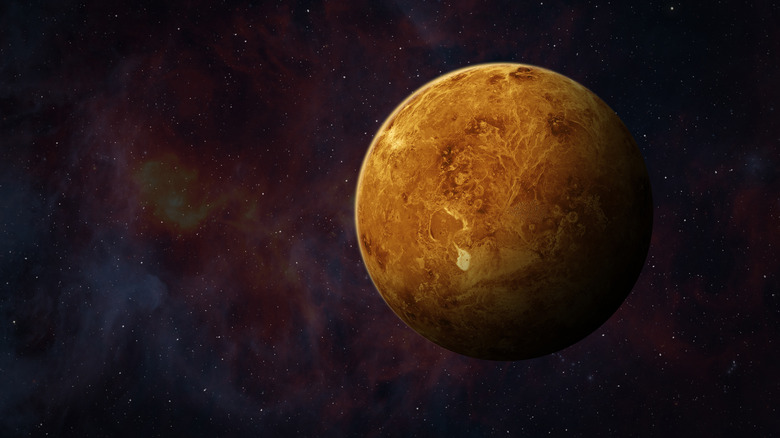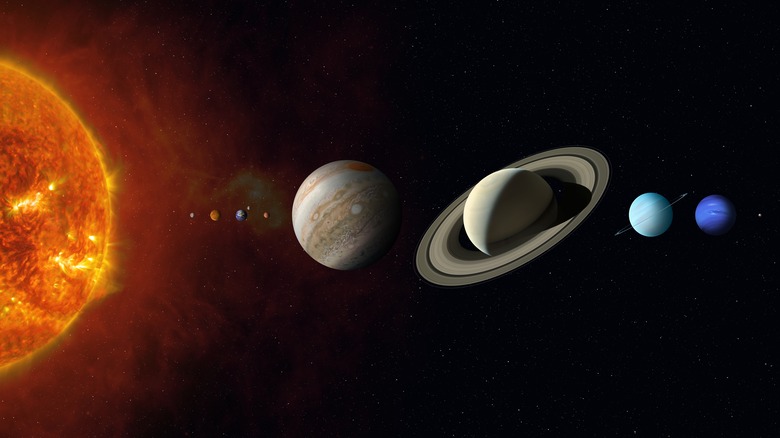3 Reasons Why Venus Spins Backwards, According To Astronomers
There are incalculable oddities in our solar system, and myriad ways that planets are different from Earth. One surprising factor you might not have considered is how planets rotate. While we all learn that the Earth rotates as it orbits around the sun, giving us days and years respectively, other planets rotate differently. Uranus, for example, is tilted over and rotates on its side. And there's something very strange about Venus: it spins backwards.
Earth and most other planets in the solar system rotate from west to east, but Venus rotates from east to west. This is strange because it's thought that our solar system formed around from a swirling cloud of dust and gas, so you'd expect the planets to have formed in such a way that they are all spinning in the same direction.
But not Venus! Venus is an oddball. It spins in what is called a retrograde rotation, meaning it rotates in the opposite direction to its orbit. Uranus does the same thing, as well as being tilted over on its axis. Regarding Uranus, scientists think that these two oddities are related, as the planet was knocked over by a series of impacts in the early life of the solar system.
But what about Venus? How did our neighbor come to rotate like that? This is a question hotly debated among planetary scientists, but there are three theories that astronomers generally put forward as an explanation.
How Venus got like that
The first theory is that Venus began its life spinning in the same direction as the other planets. But, like Uranus, it was hit by a large object, like a huge asteroid, perhaps even something the size of a planet, or perhaps it was hit many times over time. This impact knocked the planet all the way over and flipped its axis, causing it to spin in the other direction.
Another theory relates to the planet's interior. Within rocky planets there can be boundaries of different parts of the interior which have different viscosities, such as the mantle (the part near the surface) and the core (the part right in the middle). As either of these two parts moves around, it rubs at the boundary between them, creating friction. This effect, called core-mantle friction, can gradually change the spin of a planet over time. Combine this with the fact that Venus has an extremely thick atmosphere — in fact the atmosphere shows an effect called superrotation where it rotates 60 times faster than the planet and is so thick that it might affect the length of a day there — and you have a recipe for how a planet could change the direction of its rotation.
Finally, there's a more recent theory that says Venus also started out rotating the same as the other planets, but over time its rotation slowed right down until it almost stopped rotating all together. Then, it started rotating in the opposite direction. This is because its initial rotation was unstable, but rotation in the other direction was a more stable state, and it could explain why Venus rotates so slowly compared to other planets.
We still have a lot to learn about Venus, but with three missions heading there in the next few years, we should learn a lot more about this strange planet soon.

